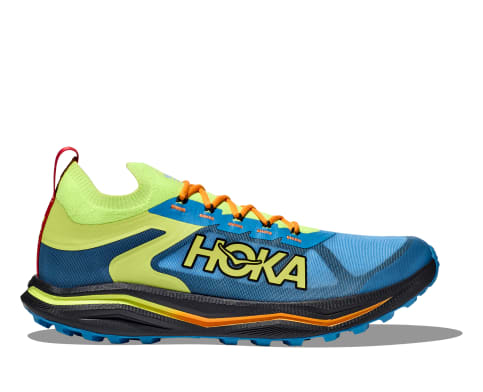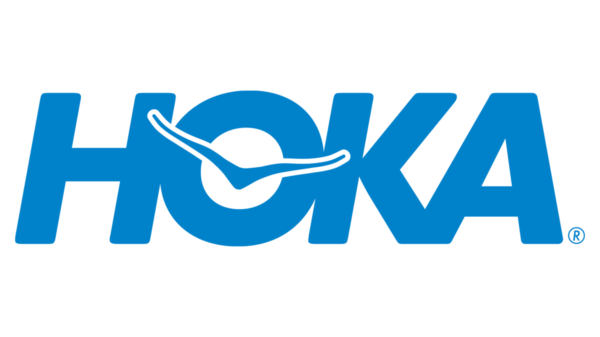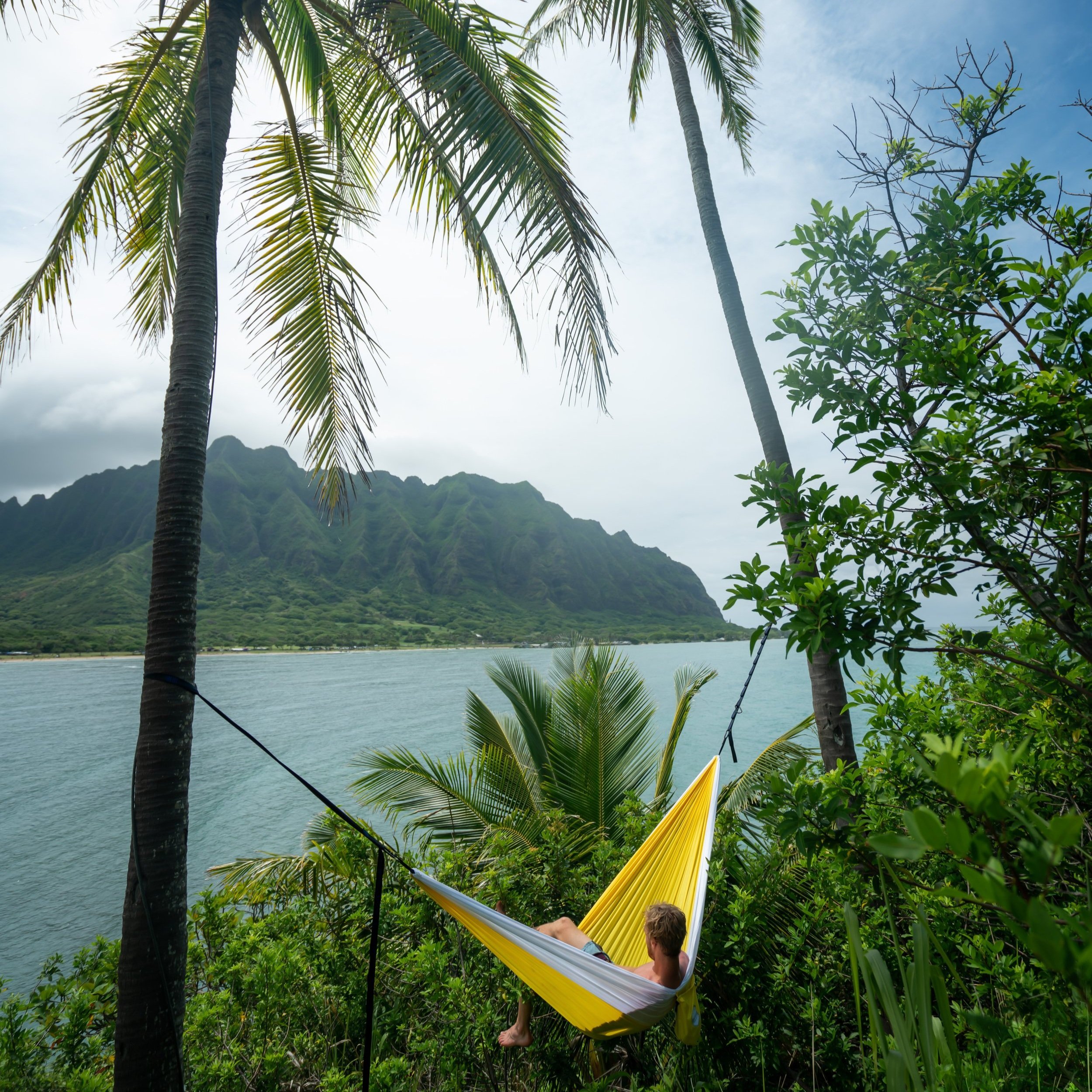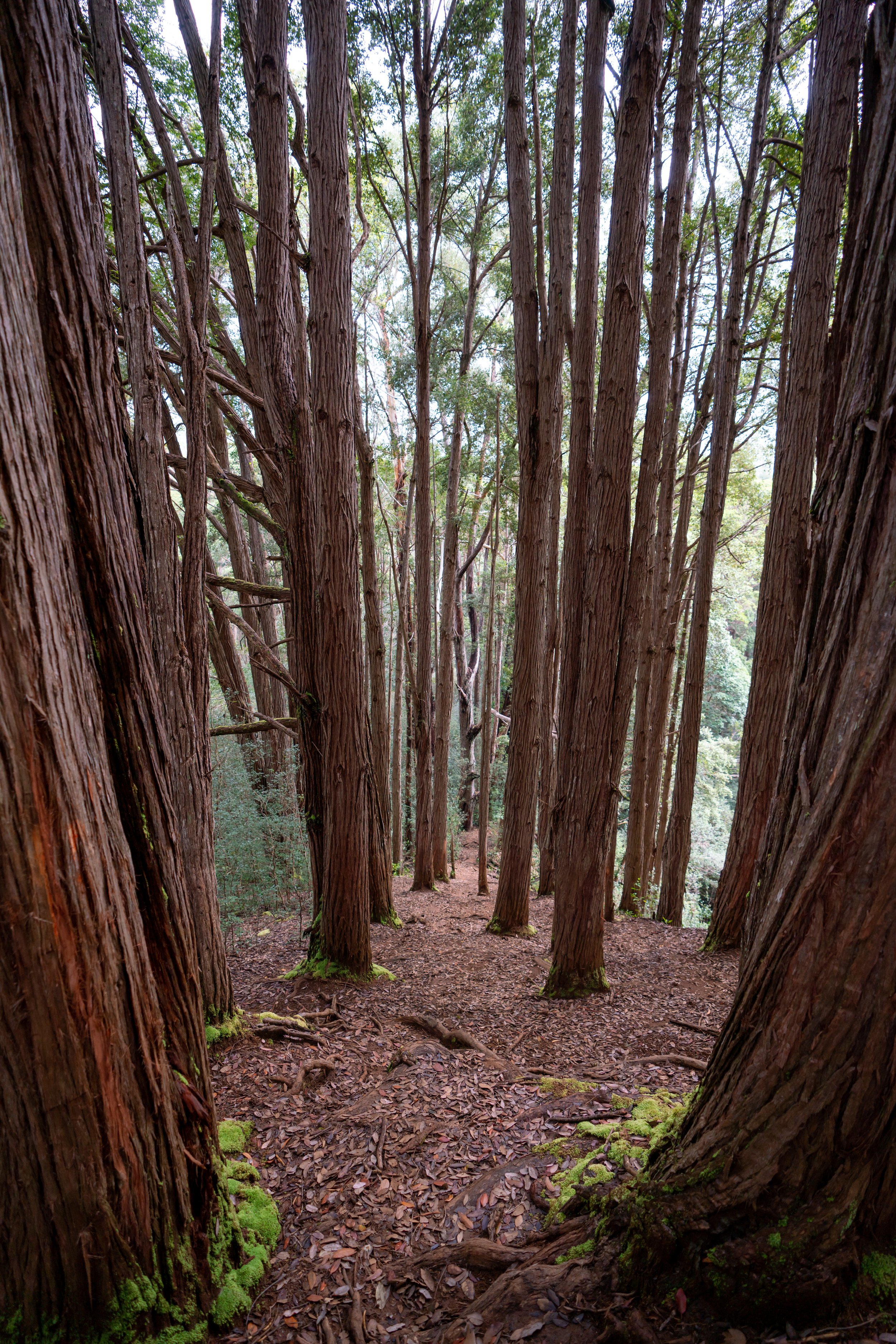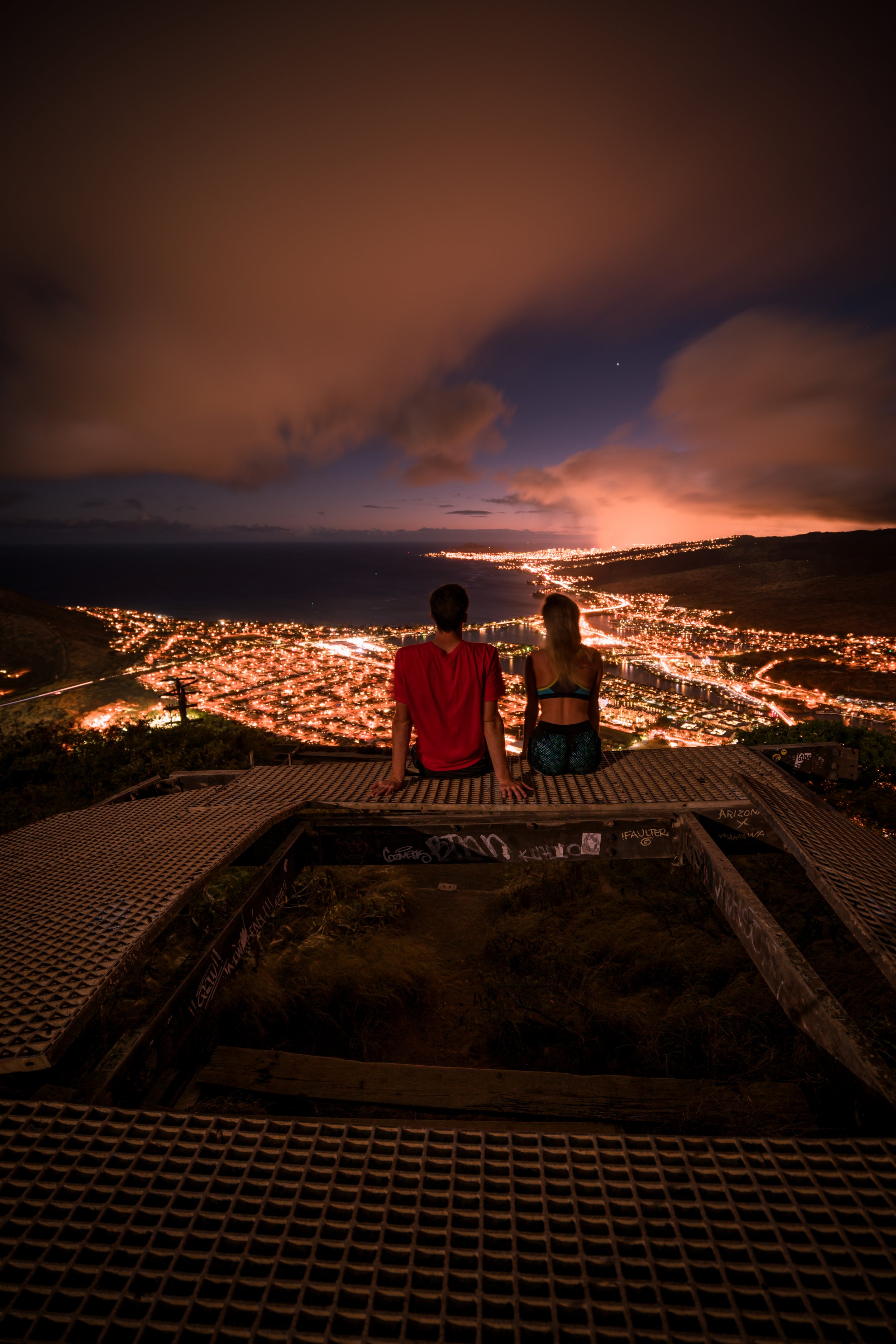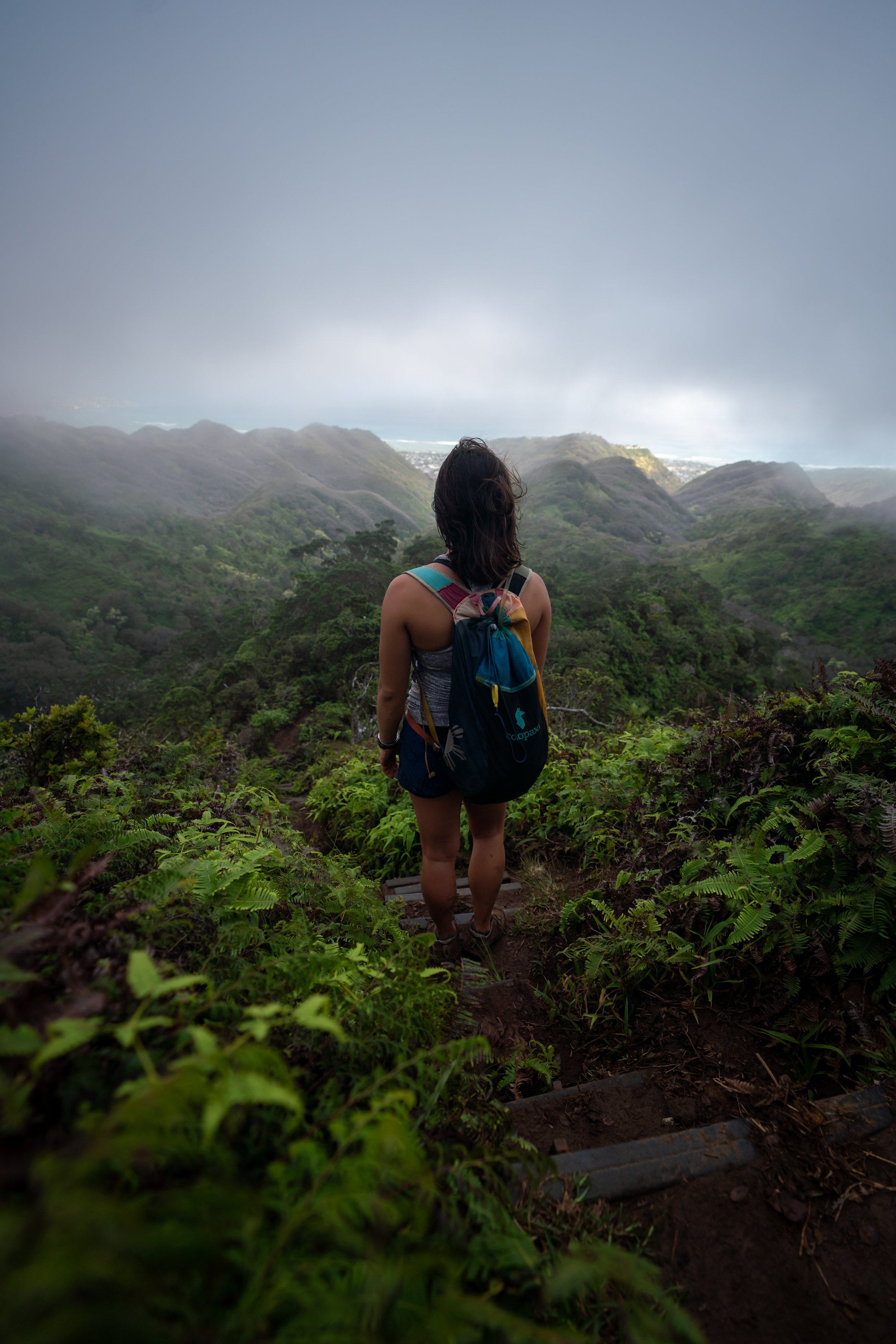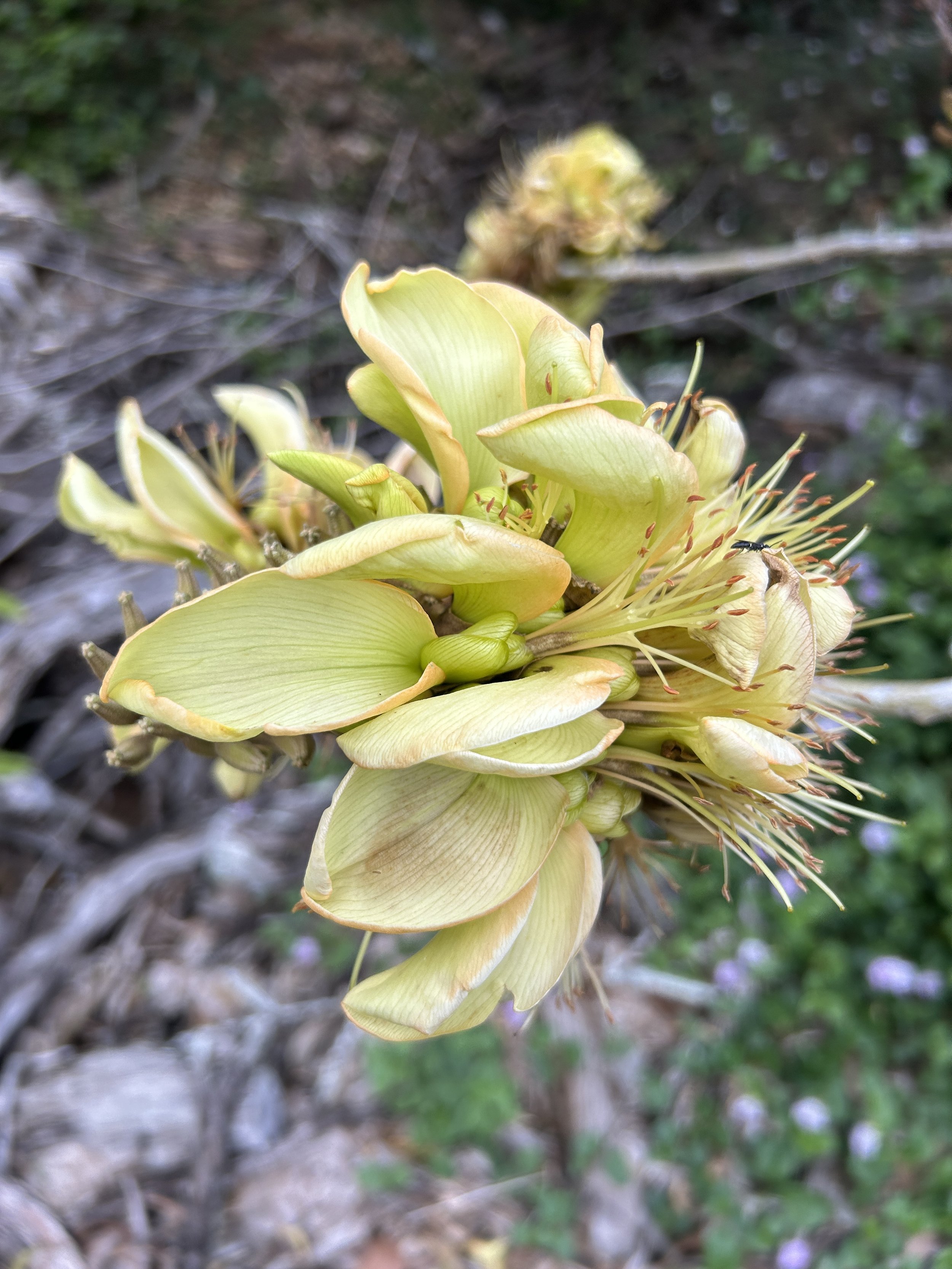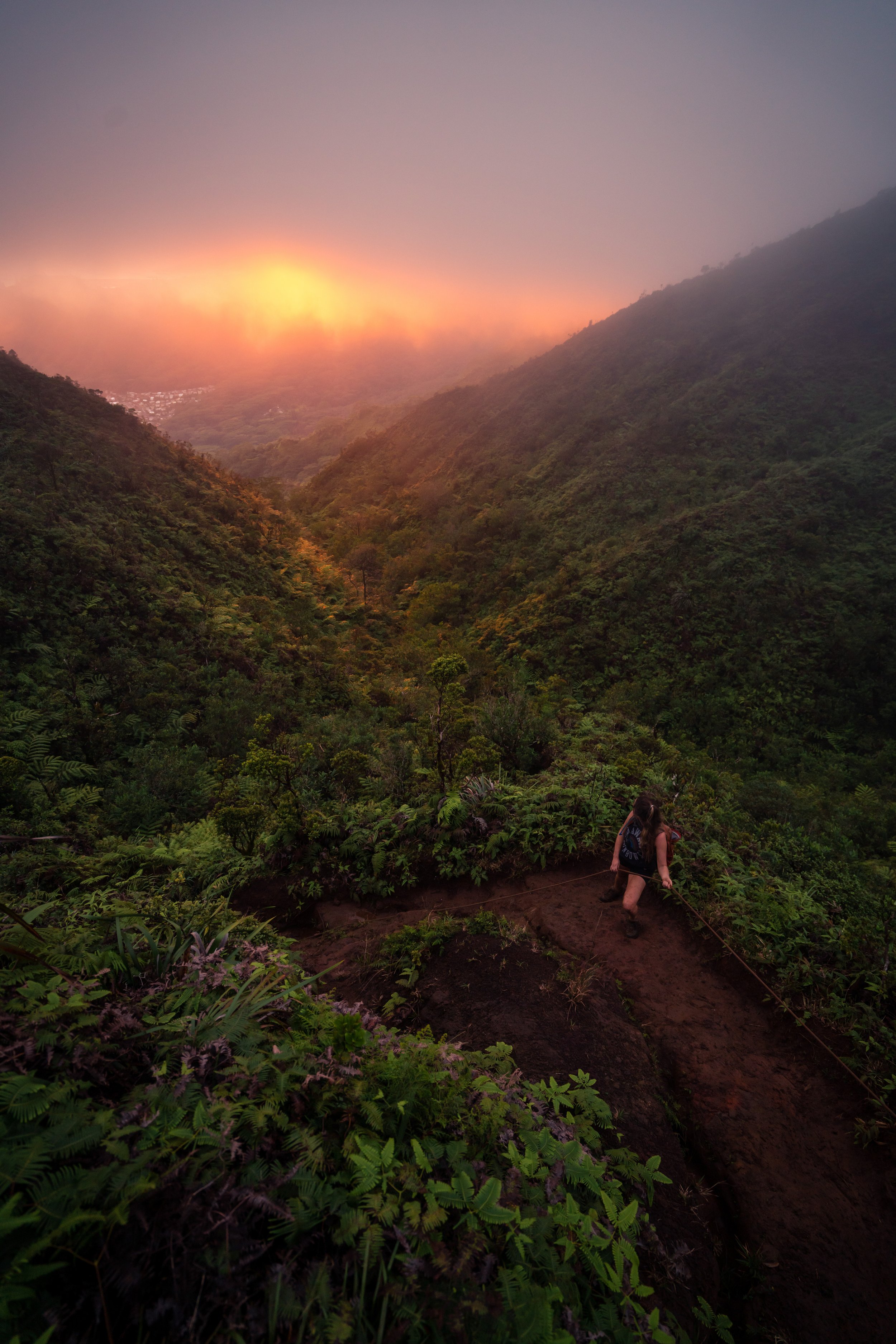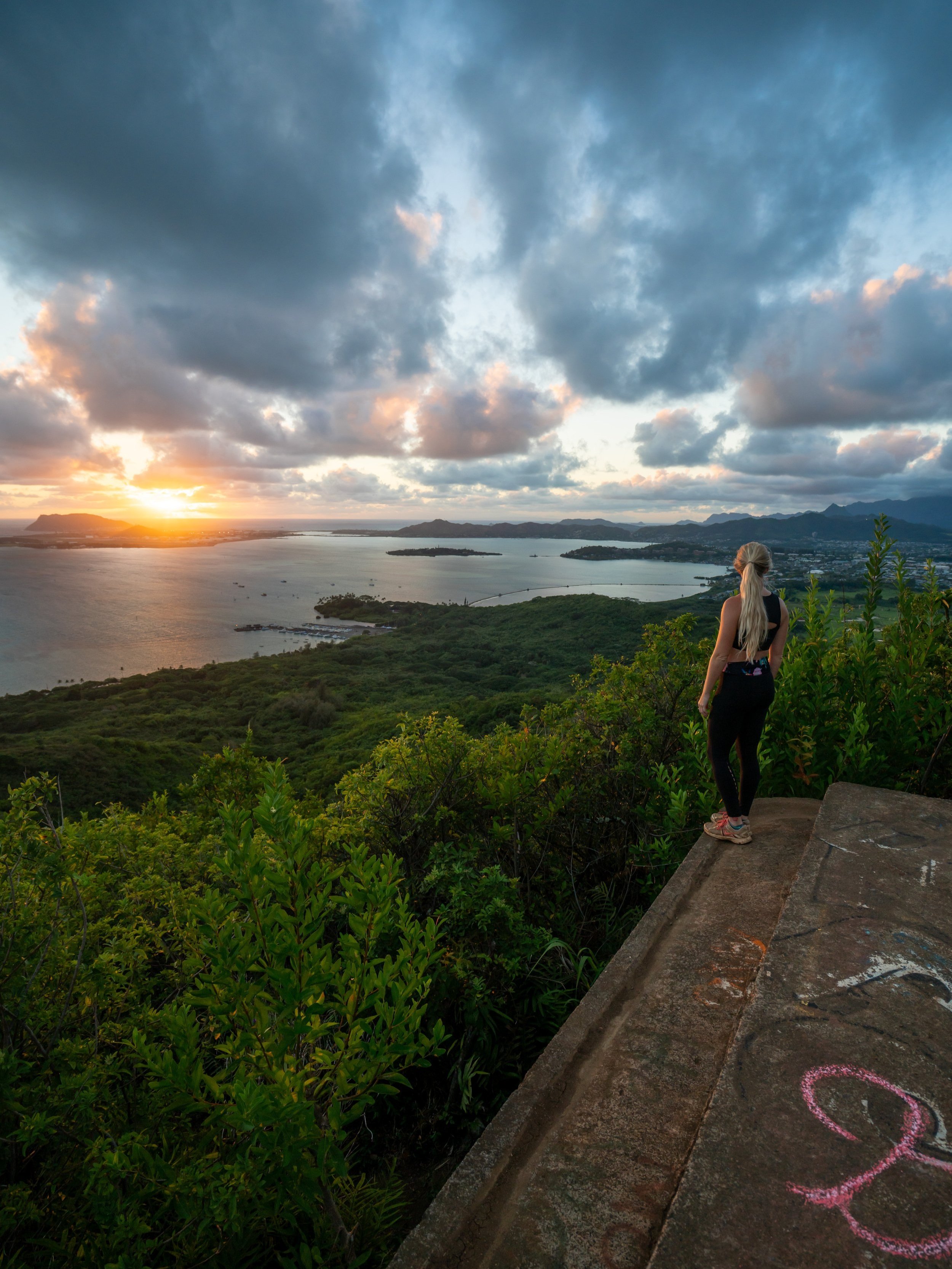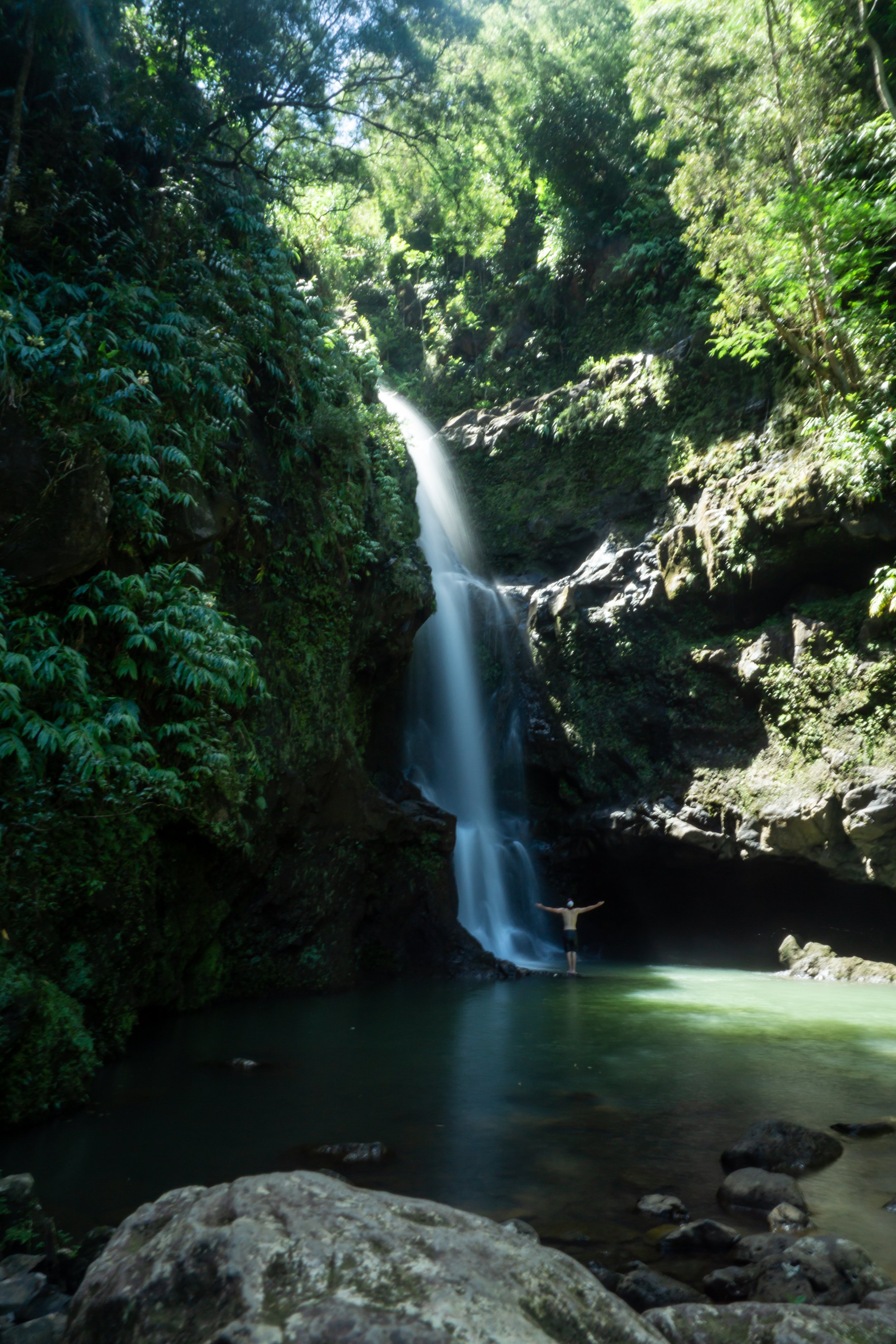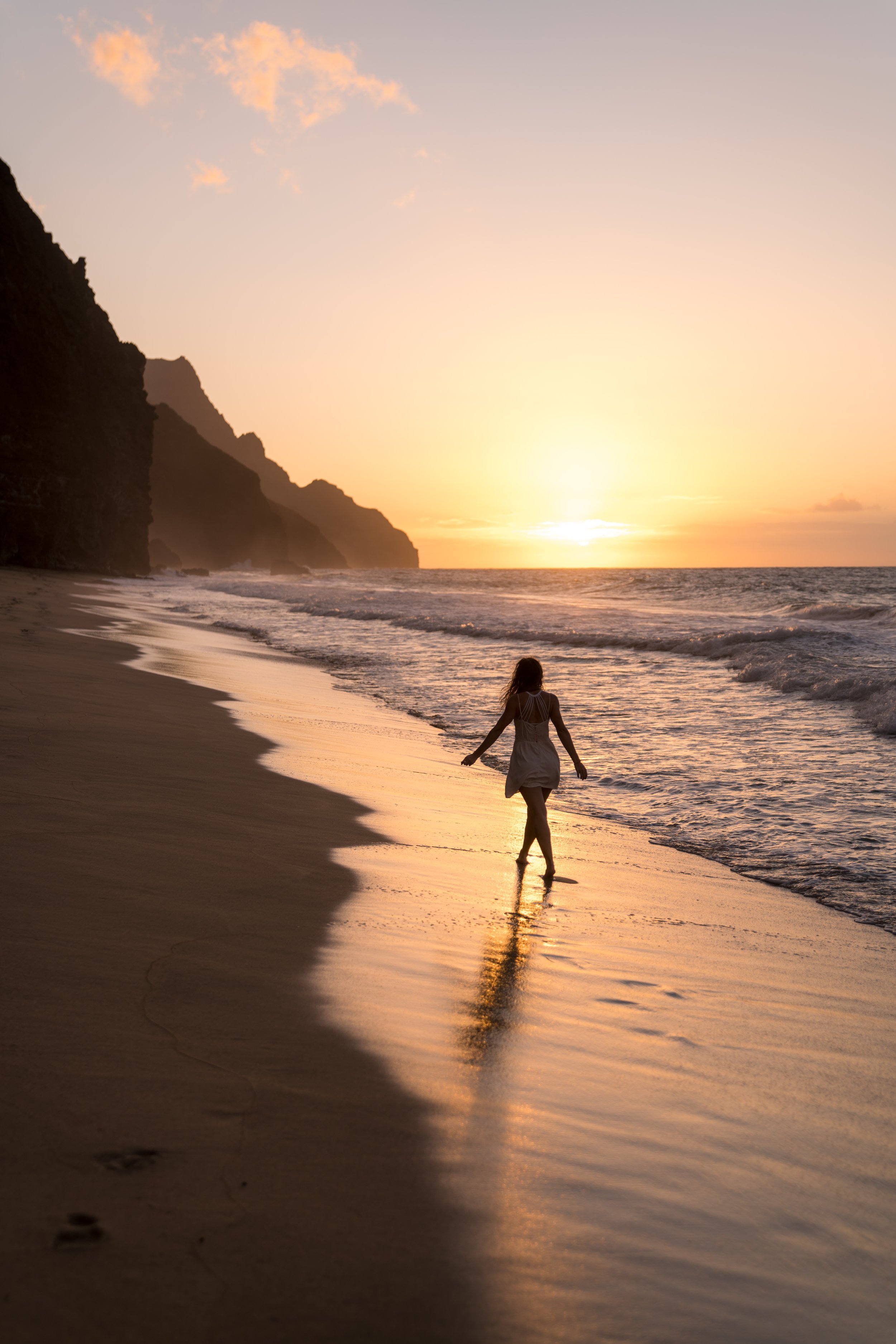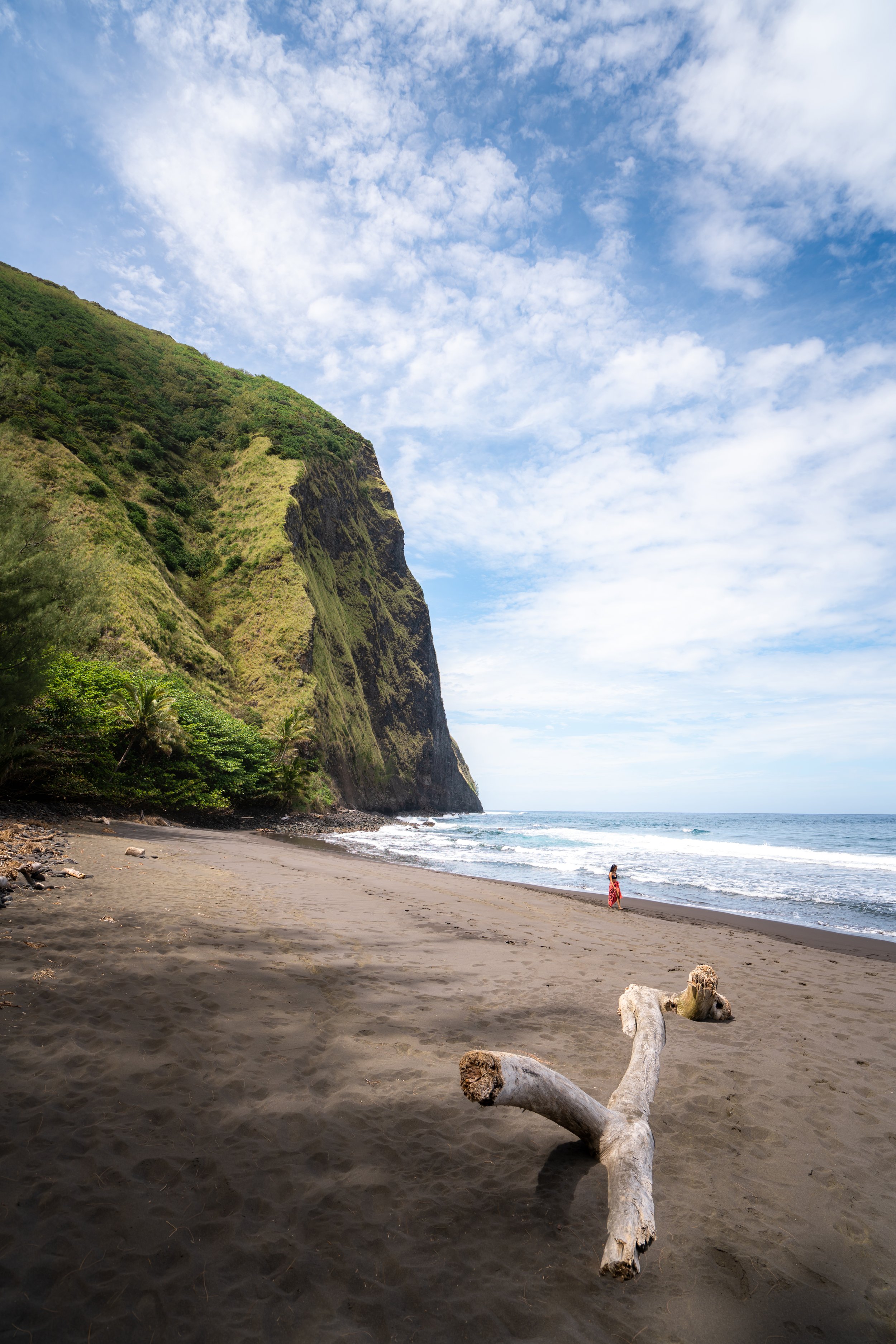Hiking the Kaʻiwi Shoreline Trail on Oʻahu, Hawaiʻi
Distance: 2.0 - 3.5 miles / 3.2 - 5.6 km
The Kaʻiwi Shoreline Trail on the east side of Oʻahu is a little-known coastal hike between Wāwāmalu (Kaloko Beach) on the southern end and the Makapuʻu Lighthouse Trail to the north.
That said, the Kaʻiwi Coast can most similarly be compared to other Hawaiʻi coastal hikes, such as the Kaʻena Point Trail on Oʻahu, the ʻŌhai Loop Trail on Maui, or the Fisherman’s Trail on Lānaʻi, except that very few hikers explore the Kaʻiwi Shoreline in its entirety.
What I mean is that most people only hike the very beginnings from either trailhead, whether by starting from Makapuʻu Point to Alan Davis Beach or Wāwāmalu through the Kaʻiwi Restoration Area.
However, in this article, I hike the full Kaʻiwi Shoreline Trail from south to north to help make sense of all the confusing and often unmarked turns.
Kaʻiwi Shoreline Trailhead Parking
Parking for the Kaʻiwi Shoreline Trail is located at either Wāwāmalu (Kaloko Beach) or the Makapuʻu Point Lighthouse Trailhead on the northern end.
However, be aware that the parking lot at the southern Wāwāmalu Trailhead is not the most suitable for low-clearance vehicles.
Google Maps Directions: Wāwāmalu Trailhead / Makapuʻu Point Lighthouse Trailhead
My Hawaiʻi Hiking Checklist
Osprey 3L Water Bladder - The Osprey 3L water bladder is the most universal hiking and backpacking water bladder on the market, and it’s my go-to because of the slide-off seal that allows it to be quickly filled from the top. Additionally, individual parts are easily replaceable, such as the bite valve.
Blister / Heel Protectors - I swear by these cheap, amazing heel protectors to prevent blisters for nearly every kind of hiking and backpacking that I do!
Hiking / Trail Running Shoes - Depending on the type of trail, I prefer to use either the Keen Targhee for longer, more rugged hiking or the HOKA Zinal Trail-Running Shoe for lighter, less intense trails. In either case, both have been amazing to me for many years across countless environments, and both can be found in men’s and women’s sizes. - (Men’s Keen / Women’s Keen) (Men’s HOKA / Women’s HOKA)
Sun Shirt w/ Hood - A quality sun shirt can be your best friend on a trail with minimal shade, which can be found in both men’s and women’s sizes.
High SPF Sunscreen - Packing high-SPF sunscreen is a must for long days outside!
Hiking the Kaʻiwi Shoreline Trail
The Kaʻiwi Shoreline Trail can begin from either the Makapuʻu Lighthouse Trailhead or Wāwāmalu at Kaloko Beach, but I typically prefer to begin at Wāwāmalu and hike north toward Makapuʻu, as Kaloko Beach is much easier to park at compared to the popular Makapuʻu Point Lighthouse Trail.
Immediately after beginning the hike, the Kaʻiwi Shoreline Trail splits for both Kaloko Beach and the route that leads toward Makapuʻu.
Here, I recommend going left, as there are more than a few routes through the Naupaka ahead if you are interested in exploring Kaloko Beach.
Kaʻiwi Shoreline-Restoration Area Junction
This next split is where hikers either have the option to go right for the Kaʻiwi-Wāwāmalu Restoration Area or left to continue toward Makapuʻu.
That being said, the restoration area along Kaloko Beach is, without a doubt, one of the best places to explore on the entire trail—which is to say, I highly recommend going right toward Kaloko Point before continuing on to Makapuʻu.
Kaʻiwi-Wāwāmalu Restoration Area
The Kaʻiwi-Wāwāmalu Restoration Area is a heavily-managed coastal restoration site that serves as a vital refuge for Hawaiʻi’s endangered Yellow-faced Bees.
With that in mind, there are a variety of native plants to look out for along the short hike to Kaloko Point, including ʻIlima, Naupaka, Naio, and Pāʻū o Hiʻiaka, to name just a few, which are some of the best species to find in order to see Hawaiʻi’s native bees!
To skip past the Kaʻiwi-Wāwāmalu Restoration Area, click here.
This is one of the many paths that hikers can follow through the Naupaka to get to Kaloko Beach.
How to See Hawaiʻi’s Yellow-faced Bees?
If you are interested in seeing the endemic Yellow-faced Bees, this stretch through the Kaʻiwi-Wāwāmalu Restoration Area is the best place on the entire Kaʻiwi Shoreline Trail.
That said, look for native Hawaiian plants with an abundance of flowers. Hawaiʻi’s Yellow-faced Bees are no different than Hawaiʻi’s endemic birds, which can typically be seen around ʻŌhiʻa lehua trees with an abundance of flowers.
However, to spot them, you really have to know what to look for, as they don’t appear anything like a typical image of a bee. Rather, they are very tiny black insects that are less than half the size of an ordinary bee.
In my experience, they typically aren’t hard to spot, but they can be challenging to get a good look at. My suggestion is to walk slowly, looking for plants with little black insects flying around. If you see this, there’s a good chance you’ve found the Yellow-faced Bee!
Now, don’t focus too hard at one plant, as I truly think the best method is to simply walk slow and look for flying insects. I hope this helps!
Kaloko Point Loop Trail
At the far end of the restoration area, the Kaʻiwi Shoreline Trail creates a short 0.2-mile (0.3 km) loop out to Kaloko Point and back.
Here, I chose to go right and return on the trail to the left.
At this split, it truly makes no difference which route you choose to hike, as the return loop can be found straight ahead in either direction.
Kaloko Inlet
After making it to the end of Kaloko Beach and the beginning of the Kaloko Inlet, the trail simply loops back to initial split from the beginning.
Kaloko Point Loop Junction
This is where the Kaloko Point Loop returns to the beginning, with the original restoration area split located just 0.1 miles (0.2 km) ahead.
Kaʻiwi-Wāwāmalu Restoration Area Junction
Whether you decided to hike through the Kaʻiwi-Wāwāmalu Restoration Area or not, the majority of the Kaʻiwi Shoreline Trail stretches from this trailhead sign to Alan Davis Beach and Makapuʻu beyond.
That being said, go right, then right again to begin hiking north to Makapuʻu.
This is where the Kaʻiwi Shoreline Trail continues past the restoration area to Makapuʻu.
At the split past the bridge, go right, then right again, as the trail to the left leads out to the alternate Wāwāmalu Trailhead off Kalanianaʻole Highway.
Google Maps Directions: Alternate Kaʻiwi Shoreline Trailhead (Wāwāmalu)
The Kaʻiwi Shoreline Trail is one of the best places on Oʻahu to see and compare two of Hawaiʻi’s most invasive species side by side: Koa Haole and Kīawe.
Yes, both of these photos show two completely different non-native plants in Hawaiʻi, which happen to grow right alongside one another throughout the hike to Makapuʻu.
South Kaʻiwi Shoreline-Kaʻiliʻili Point Loop Junction
At this split, there’s either the option to go right around the Kaʻiliʻili Point Loop or left to continue on the main Kaʻiwi Shoreline Trail toward Alan Davis Beach.
To skip past Kaʻiliʻili Point, click here.
I chose to go right to begin the loop trail along the Kaloko Inlet and Kaʻiliʻili Point.
North Kaʻiwi Shoreline-Kaʻiliʻili Point Junction
This is where the trail that loops around Kaʻiliʻili Point meets back up with the main Kaʻiwi Shoreline Trail.
Here, go right to continue hiking north toward Makapuʻu.
At this next split, go left, and the Kaʻiliʻili Inlet will be found shortly ahead.
Kaʻiliʻili Inlet
The tide should be the determining factor in whether to follow the true Kaʻiwi Shoreline Trail along the inlet or not.
By this, I mean that the Kaʻiwi Shoreline Trail continues to the right along the water, but if you happen to hike the trail at high tide, this section will almost always be underwater, meaning it’s most practical to go left around the bypass.
To learn more about the Kaʻiliʻili Inlet Bypass, click here.
This is the true Kaʻiwi Shoreline Trail along the uppermost reaches of the inlet.
This open clearing can flood during the highest tides.
Kaʻiwi Shoreline-Kaʻiliʻili Inlet Bypass Junction
This is where the two routes around the Kaʻiliʻili Inlet come back together.
That said, go right to continue on the Kaʻiwi Shoreline Trail to Alan Davis Beach.
After the two routes come together, the Kaʻiwi Shoreline Trail will cross the uppermost reaches of the Kaʻiliʻili Inlet.
Next, go right at the split immediately following the inlet.
At this point, the Kaʻiwi Shoreline Trail to Alan Davis becomes much more straightforward than the beginning sections, as there are no more major turns to remember.
Go left at this split to stay on the Kaʻiwi Shoreline Trail.
Then, go right at the next split to continue to Alan Davis Beach, located a short distance ahead.
Alan Davis Beach (Kahoʻohaihai)
Compared to Sandy and Makapuʻu Beach, located in either direction just down the road, Alan Davis Beach feels like a hidden gem, as only a fraction of visitors who hike the Makapuʻu Lighthouse Trail make the short 0.25-mile (0.4 km) walk down the Kaʻiwi Shoreline Trail to Kahoʻohaihai.
Kaʻiwi Shoreline-Wāwāmalu Shortcut Junction
Past Alan Davis Beach, go right to continue on the Kaʻiwi Shoreline Trail to the paved Makapuʻu Lighthouse Trail.
However, Alan Davis Beach, on the northern end, is truly the last highlight on the trail—unless you plan to continue up to the Makapuʻu Lighthouse.
That said, the fastest route back to Wāwāmalu (the southern trailhead) is to go left, which skips the Kaʻiliʻili Inlet along the bypass, making it the fastest route back to the beginning.
This is the rest of the Kaʻiwi Shoreline Trail to the Makapuʻu Point Lighthouse Trail up ahead.
This final stretch between Alan Davis and the Makapuʻu Lighthouse Trail is one of the best places on the Kaʻiwi Shoreline Trail to see Maʻo, also called Hawaiian Cotton.
Kaʻiwi Shoreline-Makapuʻu Point Lighthouse Junction
When hiking from south to north, the Kaʻiwi Shoreline Trail ends at the paved Makapuʻu Point Lighthouse Trail, which you can learn more about, including the hike to the tide pools, using the links below.
Read My Separate Posts: Makapuʻu Point Lighthouse Trail / Makapuʻu Tide Pools Trail
Kaʻiliʻili Inlet Bypass
If you arrive at the Kaʻiliʻili Inlet during high tide, the most practical route to continue on the Kaʻiwi Shoreline Trail is to go left at this split.
When the Bypass Trail reaches this road, go right to continue hiking north.
Finally, go right when the road around the inlet reaches this small side trail, and the two routes will come back together shortly ahead.
Kaʻiwi Shoreline-Kaʻiliʻili Inlet Bypass Junction
This is where the bypass around the inlet reconnects with the Kaʻiwi Shoreline Trail going straight (left) at this split.
To skip back to this same junction, click here.
To skip back to the beginning of the Kaʻiliʻili Inlet, click here.
Native Plants on the Kaʻiwi Coast
Aside from native Hawaiian plants, the Kaʻiwi Shoreline Trail is one of the best places on Oʻahu to see the endemic Hylaeus bees!
Now, I think it’s important to mention the native Hylaeus bees they are very tiny (about half a centimeter long), and their yellow face is only about the size of a grain of sand.
As for native Hawaiian plants, I showed a number that can be seen throughout the entire trail, but others include ʻĀkulikuli, Mauʻu ʻakiʻaki, Maiapilo, Naupaka, ʻŌhai, Milo, and ʻAeʻae, to name just a few.
If you would like to learn more about these and many other native Hawaiian plants from across the islands, I encourage you to check out my separate post linked below.
Read My Separate Post: Native Hawaiian Plant Guide
More Oʻahu Adventures
If you’re interested in reading about some more amazing Oʻahu adventures, check out my separate posts below!
Best Hotels & Restaurants in Waikīkī
If you’re trying to decided where to stay on Oʻahu, check out my top 10 list for the best resorts and restaurants in Waikīkī.
I break down what makes one hotel a better choice over another, so that you can find the best fit for your stay on the island.
Read My Separate Post: Best Waikīkī Hotels & Restaurants
HNL Airport-Hotel Shuttle
Prices on ride-share apps like Uber/ Lyft cannot beat the price of booking your hotel shuttle prior to arrival. I say this because there are additional fees for ride-share airport pick-ups at Honolulu Airport (HNL), which is why I recommend booking your transportation in advance using the options below.
Additionally, the last option below will go as far as the Ko ʻOlina Resorts on the West Side and Turtle Bay on Oʻahu’s North Shore!
Best Way to Book Rental Cars!
I travel quite a bit, and I know firsthand that finding a good rental car deal can be a challenge, but that’s why I recommend comparing all of your options with Discover Cars.
In short, Discover Cars is a well-known, reputable business that allows you to search for the best deal across companies, and they have the best full-refund cancellation policy I’ve ever seen, valid up to 72, or sometimes even 48, hours prior to your reservation!
Book Here: Discover Cars
Visiting Other Islands
If you are visiting Oʻahu or heading to another island, check out some of my personal recommendations for Oʻahu, Maui, Kauaʻi, Molokai, Lānaʻi, and Hawaiʻi Island (Big Island) in these separate posts.
If you’re trying to decide which island is right for your visit, check out my overview about each island in the post below.
Read My Separate Post: What is the Best Hawaiian Island to Visit?
What is the Best Time of Year to Visit Hawaiʻi?
The weather in Hawaiʻi can often appear to be warm and beautiful throughout the year, but in my experience, there is a lot more to consider when planning what time of year to visit the islands, such as what island you are considering, what sides of each island do you plan to stay, what activities are you most interested in, the wildlife, and countless other nuanced variables that can all impact the type of trip you can expect to have.
For these reasons, I highly recommend reading through my separate article to not only understand my thoughts regarding the best time of year to come to Hawaiʻi but also what you need to consider based on the time of year that you plan to visit.
Read My Separate Post: What is the Best Time of Year to Visit Hawaiʻi?
10 Best Tours & Excursions on Oʻahu
There are a lot of different tour options to choose from on Oʻahu, but to make it easier to decide, I made a list of my favorite tours because some things simply are better with a local guide!
Read My Separate Post: Best Tours on Oʻahu
Safety
All hikes in Hawaiʻi should not be compared to trails outside of the islands, and hikers should exercise due caution on every adventure, given that many are extremely dangerous.
By this, I mean that Hawaiʻi is known for hot, humid weather, steep, dramatic, and unstable cliffs, and flash floods, which can occur without warning. Therefore, it is important that you check the local forecast, understand the physical condition of your entire group, and pack sufficient food and water before attempting any adventure.
Disclaimer
All information provided on this blog is for informational purposes only and is not intended to be a substitute for information or advice from qualified professionals or managing agencies.
Noah Lang Photography LLC makes no representations or warranties regarding the accuracy or completeness of the information provided here, and readers should use their own discretion, judgement, and seek professional advice where it is appropriate.
Furthermore, Noah Lang Photography LLC shall not be held responsible for any injuries, lost individuals, or legal issues arising from the use of information provided on this website, and if applicable, the above safety disclaimer should be referenced to provide a generic overview of the risks involved.
All said, the content on this blog is for the sole use of Noah Lang Photography LLC, and unauthorized use or reproduction of this content is strictly prohibited.
Disclosure
This post is not sponsored.
However, some of the links in this post are affiliate links, which means that I may earn a small commission if a purchase is made through one of those links. This commission comes at no additional cost to you, and I only recommend products that I personally use and believe will add value to my readers. Thank you for your support, which enables me to continue creating more!
To read the full privacy policy, click here.

About This Blog
Noah Lang Photography, also known as @noahawaii, is 100% reader-supported!
I do not accept guest articles or sponsored content of any kind on my blog, which is why, if you enjoy the outdoor and travel content I create, please consider buying me a coffee!
I appreciate your support, which helps me continue to keep this blog alive!



